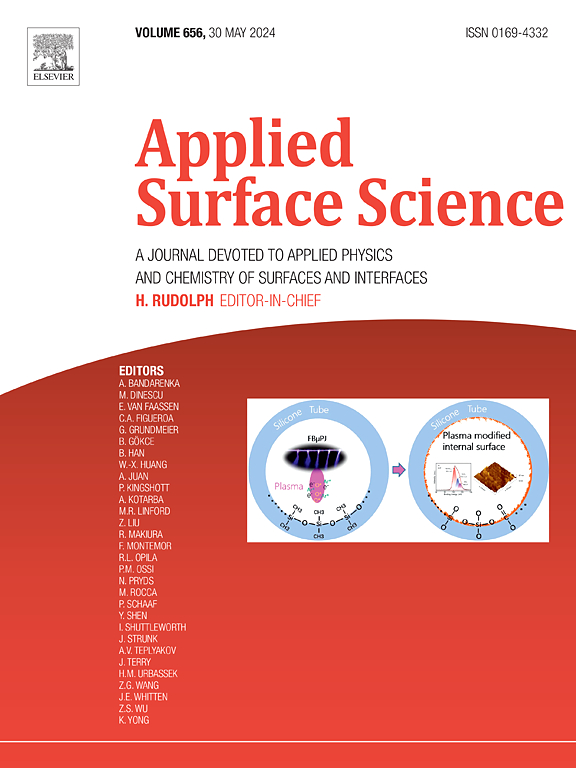2D Novel o-B2N2 supported single-atom catalysts: Multifunctional activity in Hydrogen/Oxygen electrocatalysis
IF 6.3
2区 材料科学
Q2 CHEMISTRY, PHYSICAL
引用次数: 0
Abstract
The development of multifunctional electrocatalysts capable of driving hydrogen evolution reaction (HER), oxygen evolution reaction (OER), and oxygen reduction reaction (ORR) is critical for advancing energy conversion technologies. Herein, we propose two dimensional (2D) orthorhombic diboron dinitride (o-B2N2), a new boron nitride allotrope, as innovative support for single-atom catalysts (SACs) through first-principles simulations. Findings reveal that Rh@B2N2 achieves ultralow overpotentials for HER (0.17 V), ORR (0.58 V), and OER (0.26 V), which can serve as multifunctional SACs. Ru@B2N2 and Mn@B2N2 demonstrate Pt-comparable HER activity, while Fe@B2N2 and Co@B2N2 exhibit superior ORR (0.38 V) and OER (0.43 V) efficiencies, respectively. Taking ORR reaction occurring on Rh@B2N2 and Fe@B2N2 as an example, effects of different metal centers on reaction pathways and thermodynamic barrier are elucidated. Scaling relations and volcano diagrams were employed to systematically depict electrocatalytic activity trends towards HER/OER/ORR. Mechanisms analysis identifies the d-band center (εd) and d-electron number (Nd) can quantitatively describe the HER/OER/ORR activity. Additionally, integral crystal orbital Hamiltonian population (ICOHP) demonstrates significant potential as a quantitative descriptor for ORR/OER. This work not only introduces o-B2N2 as a versatile SACs support but also provides guidance for rational design of B2N2-based electrocatalysts.

2D新型o-B2N2负载单原子催化剂:氢/氧电催化的多功能活性
开发能够驱动氢进化反应(HER)、氧进化反应(OER)和氧还原反应(ORR)的多功能电催化剂对于推动能源转换技术的发展至关重要。在此,我们通过第一原理模拟,提出了二维(2D)正交二硼二氮化物(o-B2N2)--一种新的氮化硼同素异形体--作为单原子催化剂(SAC)的创新支撑。研究结果表明,Rh@B2N2 实现了超低的 HER(0.17 V)、ORR(0.58 V)和 OER(0.26 V)过电位,可用作多功能 SAC。Ru@B2N2 和 Mn@B2N2 表现出与铂相媲美的 HER 活性,而 Fe@B2N2 和 Co@B2N2 则分别表现出卓越的 ORR(0.38 V)和 OER(0.43 V)效率。以发生在 Rh@B2N2 和 Fe@B2N2 上的 ORR 反应为例,阐明了不同金属中心对反应途径和热力学势垒的影响。利用比例关系和火山图系统地描述了 HER/OER/ORR 的电催化活性趋势。机理分析表明,d 带中心(εd)和 d 电子数(Nd)可以定量描述 HER/OER/ORR 活性。此外,积分晶体轨道哈密顿群(ICOHP)作为 ORR/OER 的定量描述因子也显示出巨大的潜力。这项工作不仅将 o-B2N2 介绍为一种多功能的 SACs 支持物,还为基于 B2N2 的电催化剂的合理设计提供了指导。
本文章由计算机程序翻译,如有差异,请以英文原文为准。
求助全文
约1分钟内获得全文
求助全文
来源期刊

Applied Surface Science
工程技术-材料科学:膜
CiteScore
12.50
自引率
7.50%
发文量
3393
审稿时长
67 days
期刊介绍:
Applied Surface Science covers topics contributing to a better understanding of surfaces, interfaces, nanostructures and their applications. The journal is concerned with scientific research on the atomic and molecular level of material properties determined with specific surface analytical techniques and/or computational methods, as well as the processing of such structures.
 求助内容:
求助内容: 应助结果提醒方式:
应助结果提醒方式:


